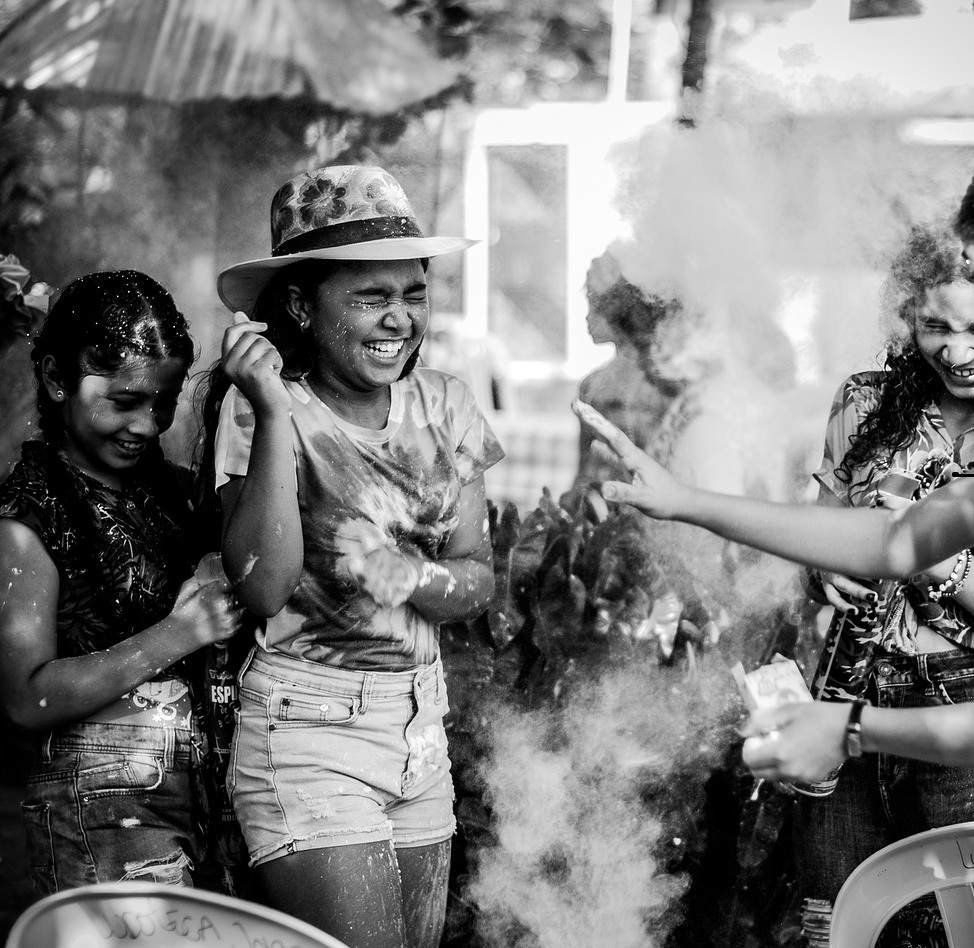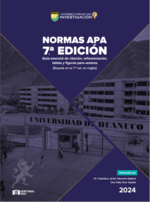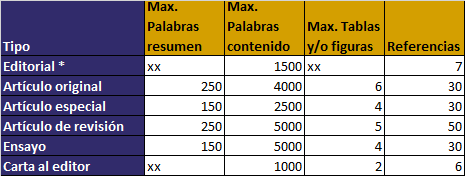Happiness: a demographic and comparative study in Huánuco, Peru
DOI:
https://doi.org/10.37711/Abstract
Objective. To determine the levels of happiness in Huánuco (Peru), and to perform a multivariable analysis by dimensions across all districts. Methods. The target population consisted of 179,096 individuals of both sexes, aged between 18 and 60 years. From this population, a stratifed probabilistic sampling method with a 97 % confidence level resulted in a sample of 1,035 participants. Data collection was conducted using the Lima Happiness Scale developed by Alarcón. Results. The samples were found to be heterogeneous across the 13 districts of Huánuco, with a p-value of 0.000. Conclusions. The population of Huánuco predominantly exhibits a low level of happiness, accounting for 40 %, followed by a medium level of happiness at 33 %, and only 1 % reporting a high level of happiness.
Downloads
References
Action for Happiness. (2022, 18 de marzo). Happiness and Democracy. World Happiness Report. https://actionforhappiness.org/happiness-and-democracy
Agüedo, C.,y Basualdo, A. M. (2018). Instrumento para medir la felicidad en la Provincia de Camaná – Arequipa [Tesis de maestría, Pontífice Universidad Católica del Perú]. Repositorio PUCP http://hdl.handle.net/20.500.12404/13172
Alarcón, R. (2006). Desarrollo de una escala factorial para medir la felicidad. Interam. j. psychol., 49(1), 95-102. https://pepsic.bvsalud.org/scielo.php?pid=S0034-96902006000100010&script=sci_abstract
Atherton, O. E.,Graham, E. K., Dorame, A. N., Horgan, D., Luo, J., Nevarez, M. D., Ferrie, J. P., Spiro III, A., Schulz, M. S., Waldinger, R. J., Mroczek, D. K., & Lee, L. O. (2023). Is there intergenerational continuity in early life experiences? Findings from the Harvard Study of Adult Development. Journal of Family Psychology, 37(8), 1123-1136. https://psycnet.apa.org/buy/2024-02064-001
Diener, E., & Oishi S. (2000). Money and happiness: Income and subjective well-being across nations. APA PsycInfo. https://psycnet.apa.org/record/2000-16279-007
Diener, E. (1984). Subjective Well-Being. Psychological Bulletin, 95(3), 542-575. https://ssrn.com/abstract=2162125
Ferrater, J. (2009). Diccionario de Filosofía (4° ed.). Ariel.
Fredrickson, B. L. (2001). The role of positive emotions in positive psychology: The broaden-and-build theory of positive emotions. American Psychologist, 56(3), 218–226. https://doi.org/10.1037/0003-066X.56.3.218
Frey, B. S., & Stutzer, A. (2001). Happiness, Economy and Institutions. The Economist Journal,110(466), 918-938. https://www.jstor.org/stable/2667858
Jiménez, L. V. (2024). Calidad de vida y bienestar psicológico en una comunidad campesina de Piura [Tesis de maestría, Pontífce Universidad Católica del Perú]. Repositorio UPAO. https://hdl.handle.net/20.500.12759/35951
Helliwell, J. F., Layard, R., & Sachs, J. D. (2023). World Happiness Report 2023. Sustainable Development Solutions Network. https://worldhappiness.report
Instituto Nacional de Estadística e Informática. (2020). Encuesta Nacional de Hogares-2020. INEI. https://www.datosabiertos.gob.pe/dataset/encuesta-nacional-de-hogares-enaho-2020-instituto-nacional-de-estad%C3%ADstica-e-inform%C3%A1tica-inei
Inglehart, R., & Klingemann, H.D. (2000). Genes, culture, democracy, and happiness. The MIT Press. https://psycnet.apa.org/record/2000-16279-006
Lyubomirsky, S., & Schkade, D. (2005). Pursuing Happiness: The architecture of sustainable Change. Review of General Psychology, 9(2), 111-131 https://doi.org/10.1037/1089-2680.9.2.111
Serrano, A. C. (2024). Desafíos Geográfcos y Culturales en la Salud Mental Adolescente en el Perú: Un Llamado a la Acción Integral. Lancet Reg Health Am, 31, 100702. 10.1016/j.lana.2024.100702
McGregor, S.L.T. (2020). Emerging from the Deep: Complexity, Emergent Pedagogy and Deep Learning. Northeast Journal of Complex Systems,2(1). https://doi.org/10.22191/nejcs/vol2/iss1/2
Real Academia Española. (2023). Diccionarios. RAE. https://www.rae.es/
Rojas, M. (2021). Happiness and development from a Latin American perspective. The Journal of Positive Psychology, 16(1), 1–12. https://doi.org/10.1080/17439760.2020.1832245
Salazar, S., y Gamboa, K. (2024). La felicidad y su relación con la productividad laboral en los estudiantes de una Facultad de Economía, Perú, 2024. Gaceta Científca, 10(4), 173-181. https://doi.org/10.46794/gacien.10.4.2337
Seligman, M. (2002). Authentic Happiness. Using the new positive psychology to realize your potential for lasting fulflment. Free Press. https://psycnet.apa.org/record/2002-18216-000
Seligman, M. E. P. (2011). Flourish: A visionary new understanding of happiness and well-being. Free Press. https://psycnet.apa.org/record/2010-25554-000
Seligman, S., & Csikszentmihalyi, M. (2000). Positive psychology: An introduction. American Psychologist, 55(1), 5-14. https://doi.org/10.1037/0003-066X.55.1.5
Villavicencio, J. G., Martell L. E., Smith, P. A., y Mendoza, T. E. (2018). Felicidad en el Distrito de Santiago de Surco en Lima, Perú [Tesis de maestría, Pontífce Universidad Católica del Perú]. Repositorio PUCP. http://hdl.handle.net/20.500.12404/13175
Yanamoto, J. (2019). La gran estafa de la felicidad. Lima. Paidós.

Downloads
Published
Issue
Section
License
Copyright (c) 2025 Larry Franklin Acencio-Malpartida

This work is licensed under a Creative Commons Attribution 4.0 International License.
a. Los autores conservan los derechos de propiedad intelectual (copyright) de las obras publicadas, cediendole a la revista el derecho de primera publicación.
b. Los autores retienen sus derechos de marca y patente, y también sobre cualquier proceso o procedimiento descrito en el artículo.
c. Los autores retienen el derecho de compartir, copiar, distribuir, ejecutar y comunicar públicamente el artículo publicado en la RD (por ejemplo, colocarlo en un repositorio institucional o publicarlo en un libro), con un reconocimiento de su publicación inicial en la RD.
d. Los autores retienen el derecho a hacer una posterior publicación de su trabajo, de utilizar el artículo o cualquier parte de aquel (por ejemplo: una compilación de sus trabajos, notas para conferencias, tesis, o para un libro), siempre que indiquen la fuente de publicación (autores del trabajo, revista, volumen, número y fecha).























